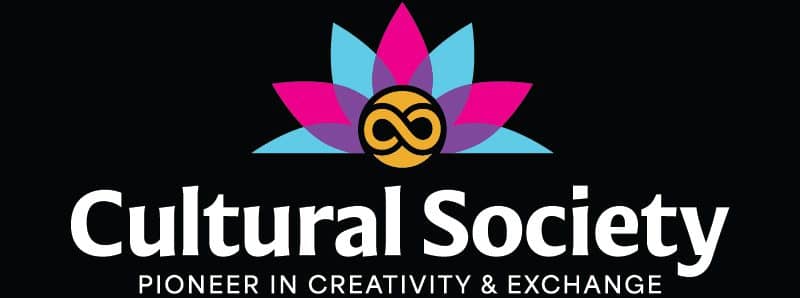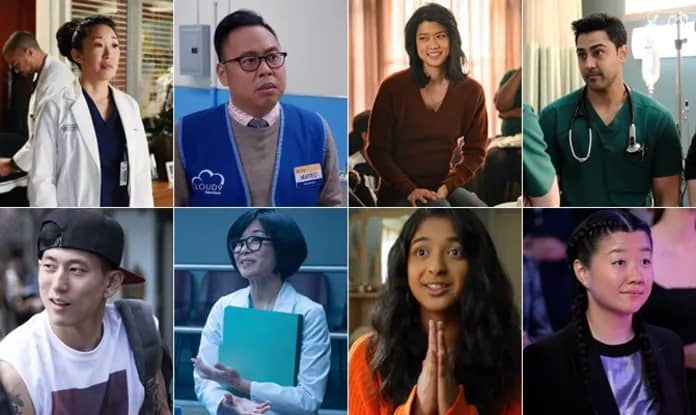The U.S. entertainment industry is worth billions of dollars. The influence of this money-producing entertainment industry on social daily life is undeniable. It has set social and beauty standards in the U.S. and beyond. The movies that get produced in this industry represent varying versions of reality.
More specifically, they showcase the perception of reality of the writers and directors developing these films in Hollywood. These writers and directors bring their own life perspectives and biases into the movies that they produce. Bias may occur even if it is not intentional and it can be represented in the casting decisions, storyline, time on screen, and character development. When considering that Hollywood directors, writers, and producers are predominantly white men, we must question which points of views, standards, and stereotypes are being reproduced. In more recent years, the portrayal of AAPI characters in the media has been studied, and the findings call for urgent solutions to show the diversity of experiences in the AAPI community and to stop the dissemination of harmful stereotypes.
Most analysis of Asian representation in U.S. films reveals negative stereotypical portrayals of Asian characters. There are a significant amount of movie scenes that have reproduced harmful stereotypes about Asian Americans. In certain movies, Asians have been “mocked, denigrated, and singled out for being the ‘other’” (Harvard Kennedy School). The mockery associated with these characters is supported by a study from the Geena Davis Institute on Gender which analyzed top films from 2010 to 2019 and found that for Asian characters, “audiences are asked to laugh at nearly half of Asian and Pacific Islander roles.” This presents the idea of mockery rather than the audience laughing with the characters.
These portrayals are influenced by stereotypical ideas already existing in society, but representing them in the media has the power to strengthen these negative stereotypes further. Showcasing offensive scenes can give the message to people that it is acceptable to hold these beliefs and stereotypes. This is significant because it could explain some of the anger and justification behind the hate crimes against Asian Americans that peaked during the pandemic. Media has created the sense that AAPI characters are ‘others.’ This concept of ‘otherness’ can create division and separation in the U.S., leading to devastating consequences like hate crimes.
With the recent growth of hate crimes against Asian Americans, society saw the racism and bias that the AAPI community has been dealing with throughout their history in the U.S. It was a wake up call to many who believed in the model minority myth too. It was a wake up call to see a racism that has always been present – and the clues of this existence are represented in popular U.S. films and television. As mentioned in the Asian American Policy Review student publication of the Harvard Kennedy School, “stereotypical portrayals of Asian American characters flood our screens again and again. These repeated reminders of dehumanizing stereotypes make it psychologically easier to hurt that group of people.”
When looking at the representation of female Asian characters, the 2021 CAPE study by the Geena Davis Institute on Gender found that “female Asian and Pacific Islander characters are more likely than female characters of any other race to be onjectified on screen.”3 These objectifying ideals are harmful because they remove the humanity from this certain demographic. Interestingly, “65% of anti-Asian hate incidents between March 2020 and March 2021” were reported by women. Although it can’t be proven that attackers were motivated by media depictions, there is no doubt that historically media has influenced and reinforced harmful social beliefs.
Recently, there has been a lot of recognition that U.S. media should strive to be more diverse. The Asian American Policy Review from the Harvard Kennedy School Student Publication presented some possible solutions to this issue. They support the increase of diversity in AAPI stories and telling stories that go against stereotypes to start portraying Asians in a real light. It is important that influential people in the entertainment industry begin implementing these solutions to highlight the diversity of the AAPI experience and to move away from the harmful stereotypical portrayals of Asian characters.
About The Author: Johanna was an administrative intern at AAC-CSEBRI in the summer of 2022. You can find her bio here.
References:
“Diversity Sells — But Hollywood Remains Overwhelmingly White, Male,”
NBC News, “Almost half of all Asian roles serve as a punchline, study finds”,
https://www.nbcnews.com/news/asian-america/almost-half-all-asian-roles-serve-punchline-study-finds-n1276103
“I Am Not a Fetish or Model Minority: Redefining What It Means to Be API in the Entertainment Industry,” Geena Davis Institute on Gender in Media, 2021, 26,
https://seejane.org/wp-content/uploads/api-study-2021-8.pdf

